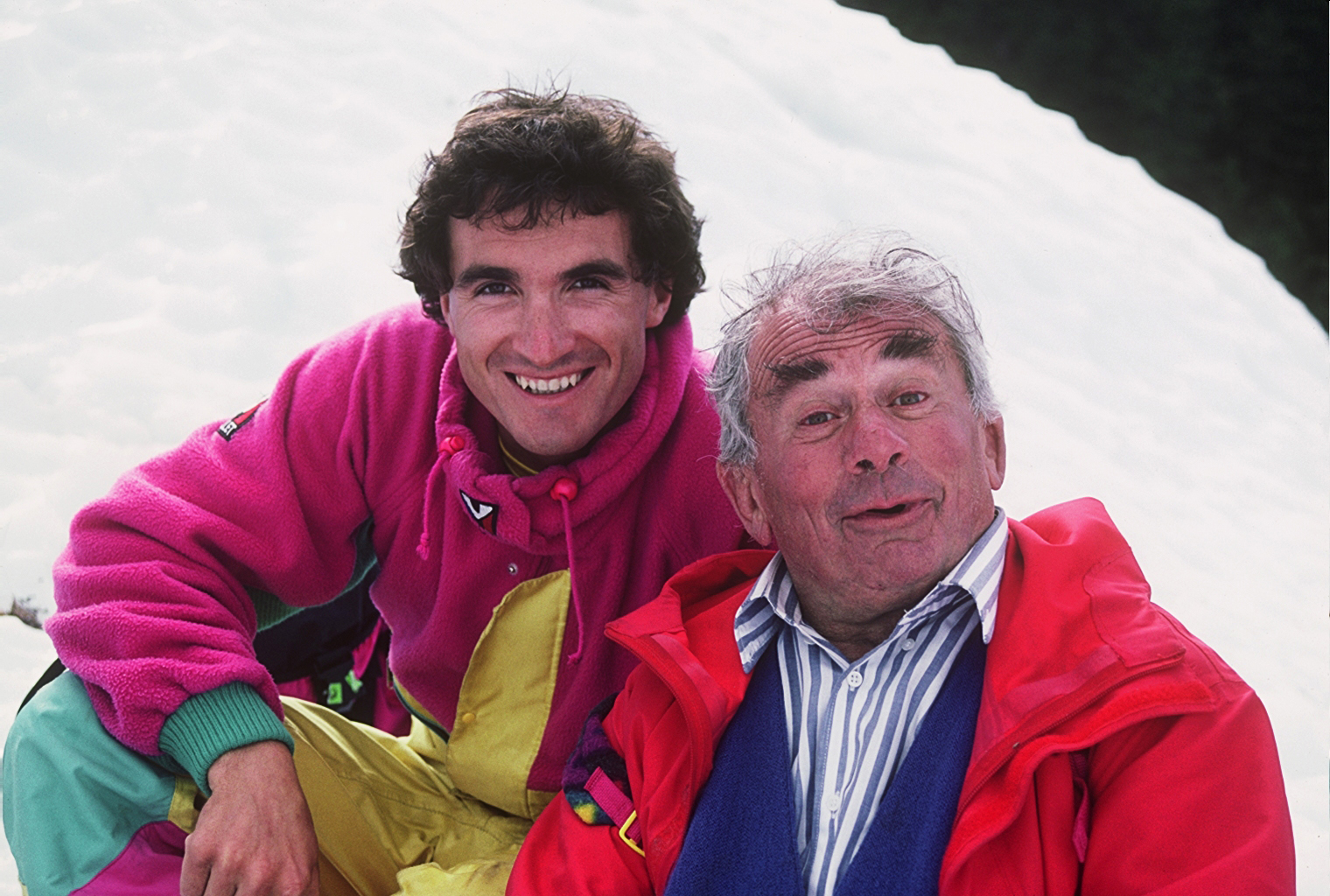In July 1956, the actor and cellist Maurice Baquet, along with the mountaineer Gaston Rebuffat, made the first ascent of the south face of the Aiguille du Midi (3842m), a magnificent red granite wall that rears up like a rampart above the Vallée Blanche, in the Mont-Blanc range…
32 years later, as if in tribute to the memory of his friend Gaston, Maurice Baquet once again climbs this wall hanging between sky and earth, this time with Christophe Profit.
Photography Laurent Chevallier, Denis Ducroz • Sound Olivier Schwob, Bernard Prud’homme • Editing Marie Quinton • Mix Julien Cloquet • Production manager Françoise Buraux • Executive producer Yves Jeannneau • With the assistance of the guides Michel Arrizi, Richard Bozon and Frédéric Folliguet • Footage from the film “Etoiles et Tempêtes” by Gaston Rebuffat, with the kind permission of Françoise Rebuffat • Co-produced by Les Films d’Ici and Antenne 2 • With the participation of Sandoz-France.
Grand Prize at the “Snow and Ice” Festival, Autrans, 1988 • Audience Prize, World Festival of Mountaineering Films, Antibes, 1988 • “Best Mountainfilm Spirit”,Mountain Film Festival in Telluride (USA), 1989 • Special Jury Prize, Mountain Film Festival, Banff (Canada), 1989.
First TV broadcast : January 1989, Antenne 2
Le Come-back de Baquet by Barbara Levendangeur
(Taken from the catalogue of the 2005 “Visions du réel”, International Festival in Nyon, Switzerland)
Nicolas Philibert’s last sports adventure film, Le Come-back de Baquet, is the only one in the series that was initiated by the director. This song of the mountains relates the reiteration of a feat and of a friendship linking two periods and two events : thirty-two years after the first ascent of the south face of the Aiguille du Midi with his mountaineer friend Gaston Rebuffat, now deceased, the actor and cellist Maurice Baquet climbs the rock face again, this time roped to Christophe Profit – a mountaineer to whom Nicolas Philibert has already dedicated three films.
The filmmaker’s world is already clearly identifiable : a pronounced taste for the comic and for staging situations – the documentary is filled with short scenes that make fun of Maurice’s clumsiness – but also an unfailing sense of sharing and solidarity. The rope takes on a both real and symbolic dimension : it connects, reassures and imposes responsibility. It participates in a climb intended to reconnect with the departed, a suspended moment, quasi-mythical, in which death is cast aside. A healing virtue which passes through the filmmaker’s work in the same way as his skill at making bodies and space interact and his attention to framing and depth of field: when we view these bodies clinging to the rock face or suspended between sky and earth, in harmony with the mountains around them, we can tell that a great documentary filmmaker has been born.
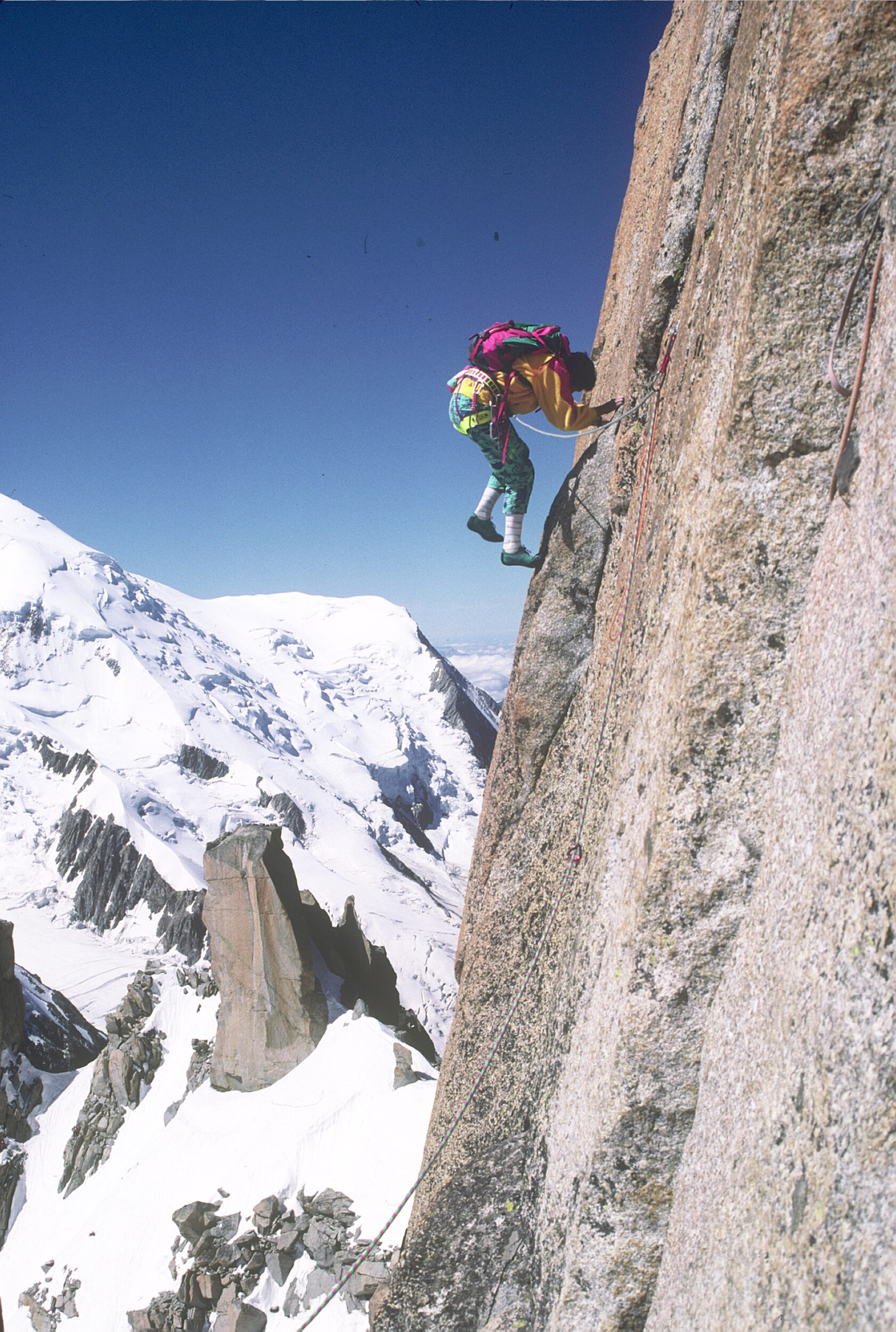
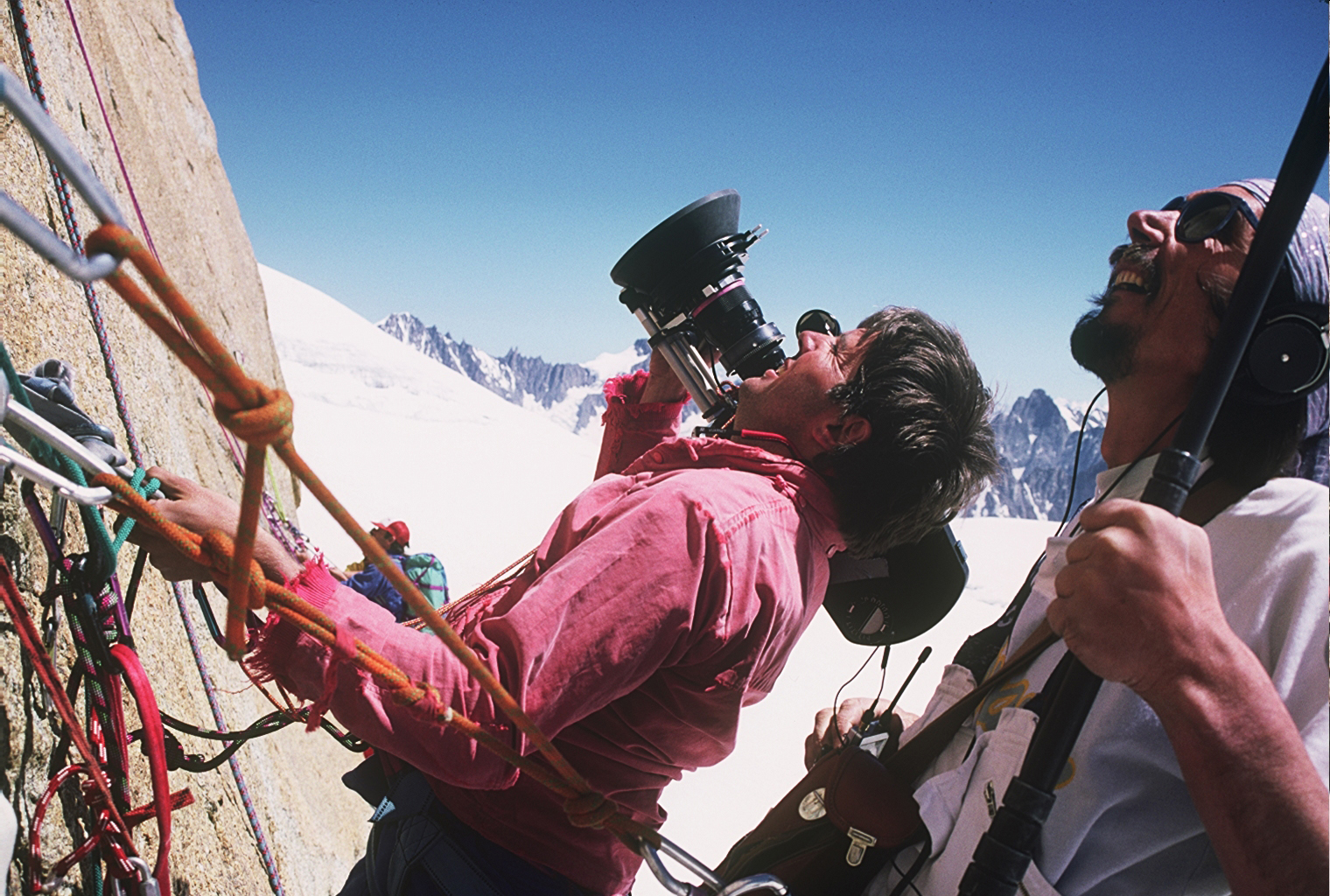
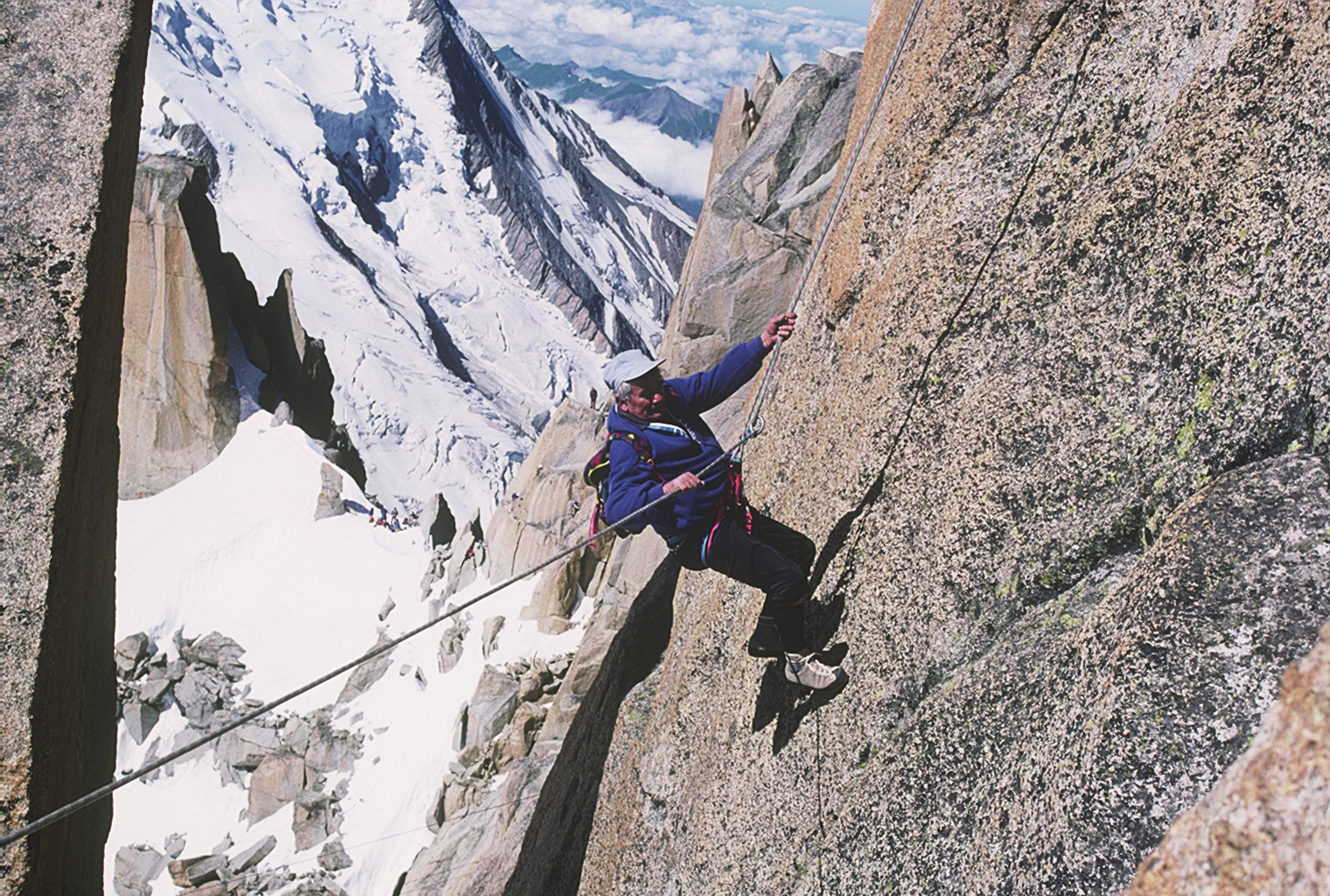
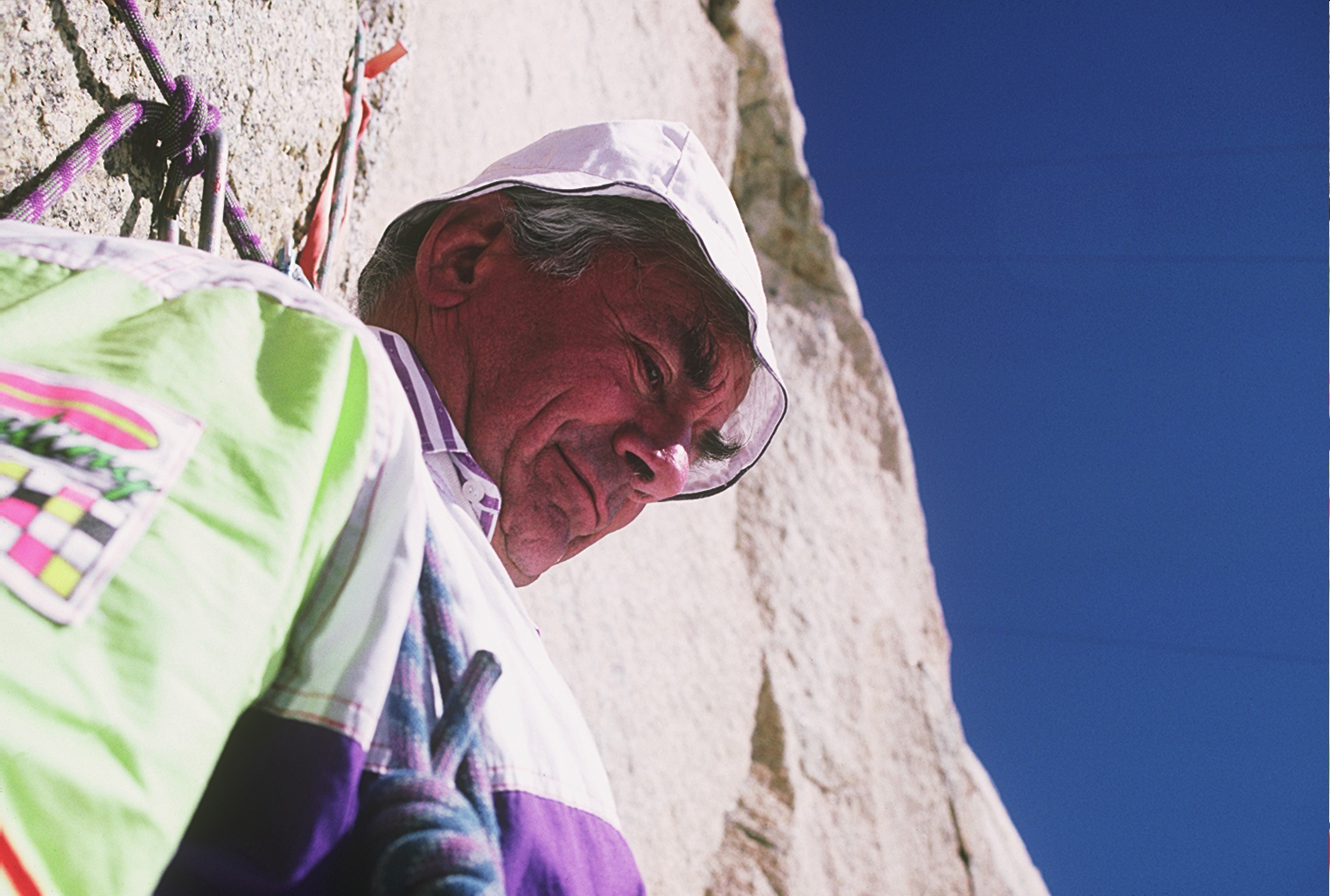
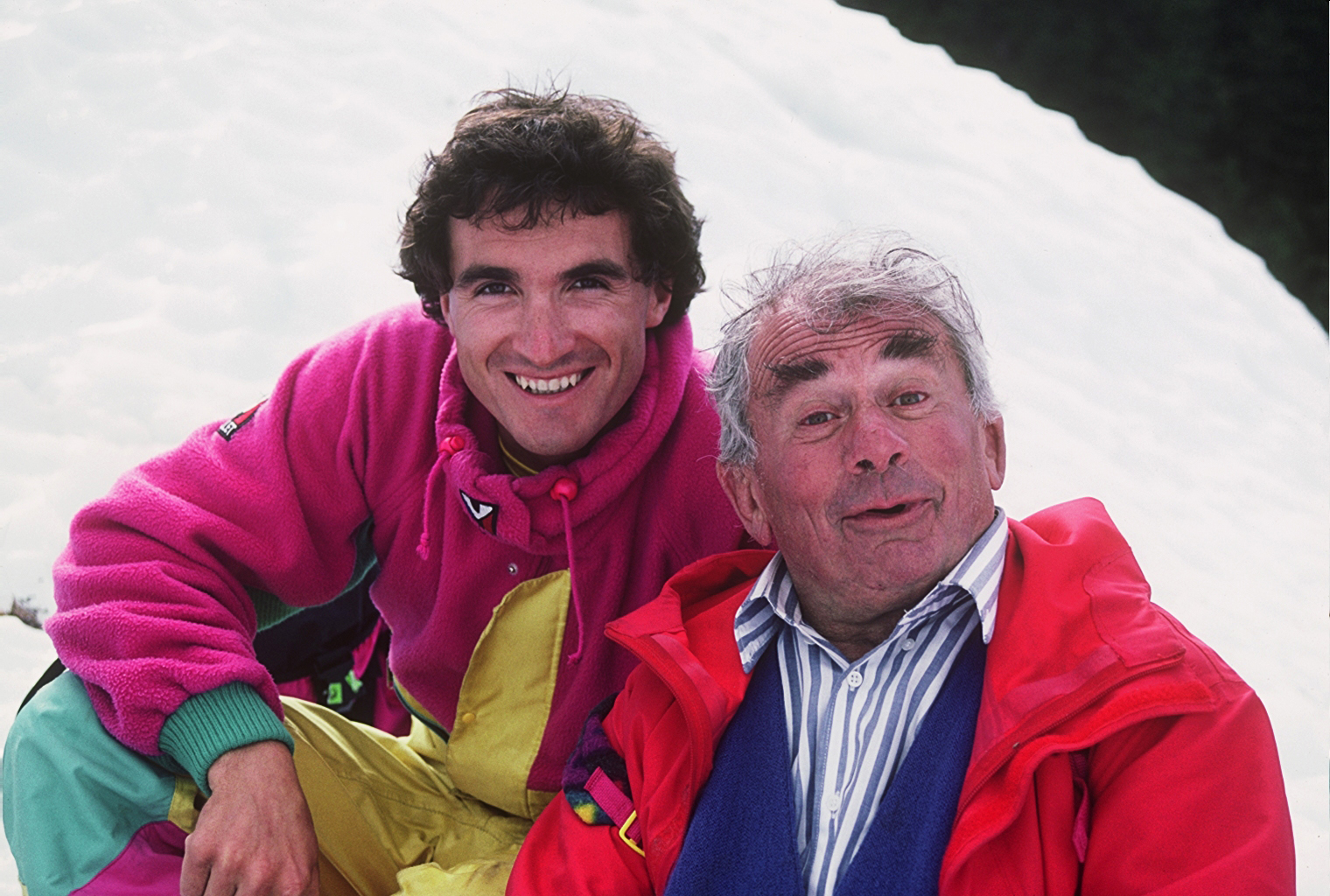
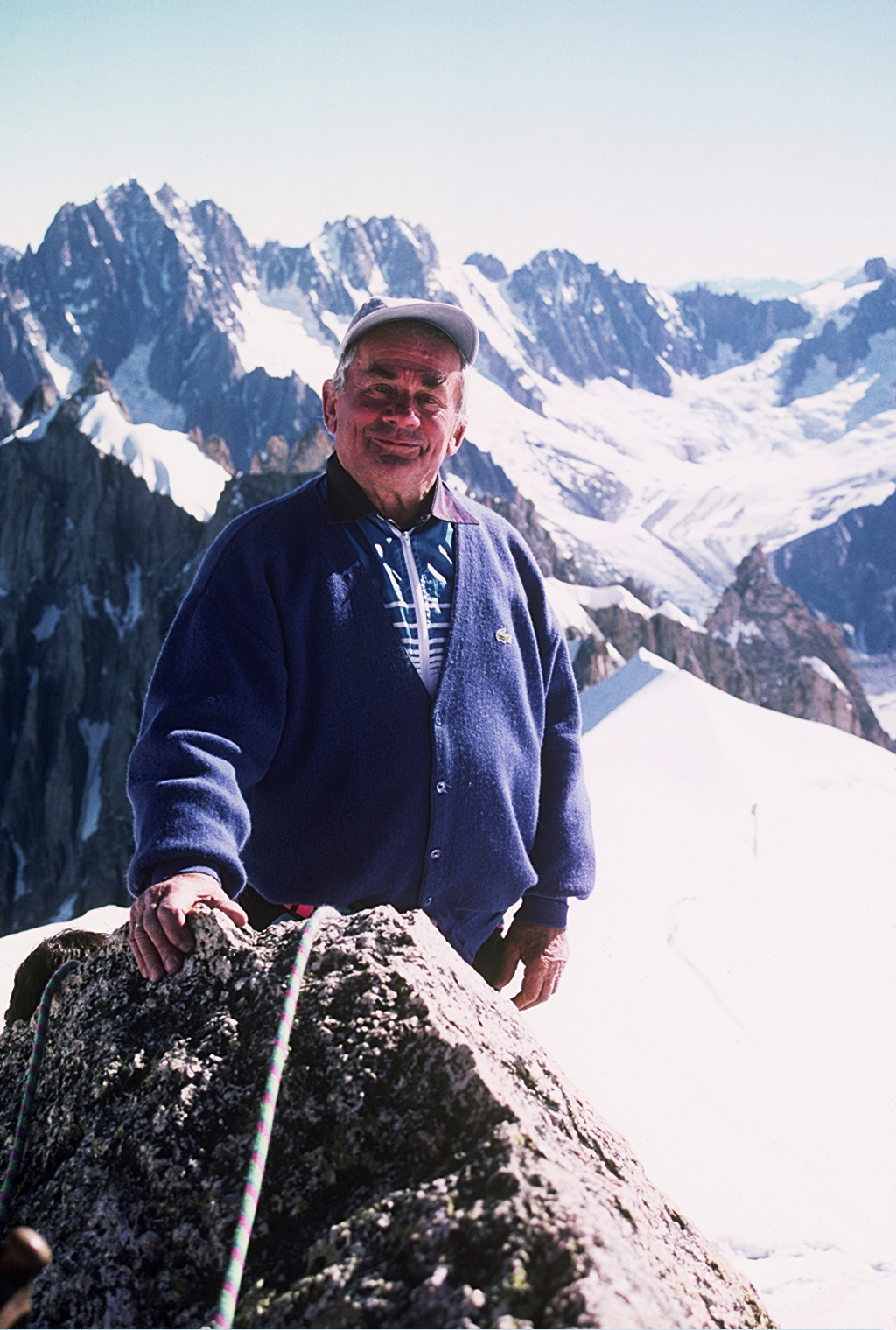
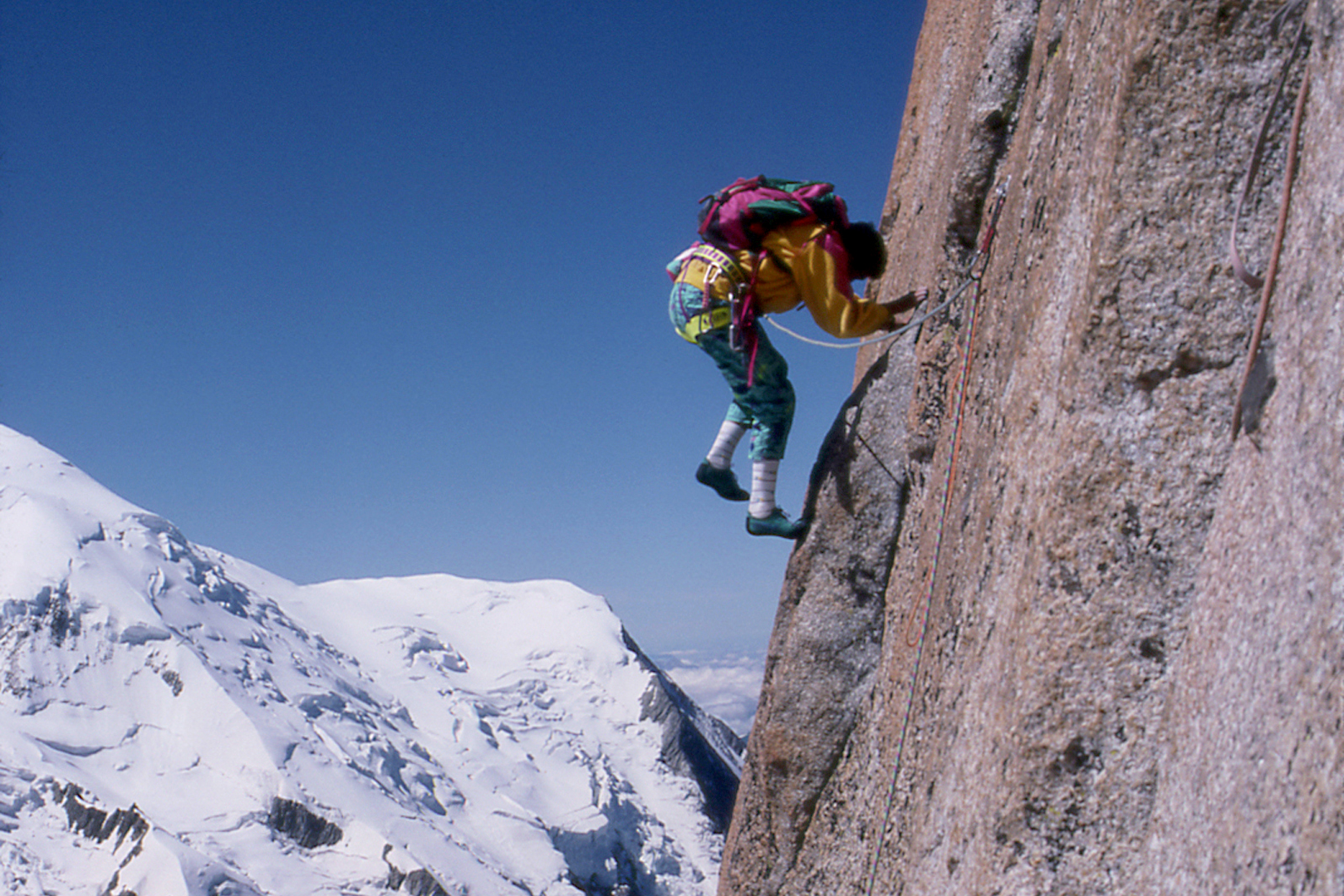
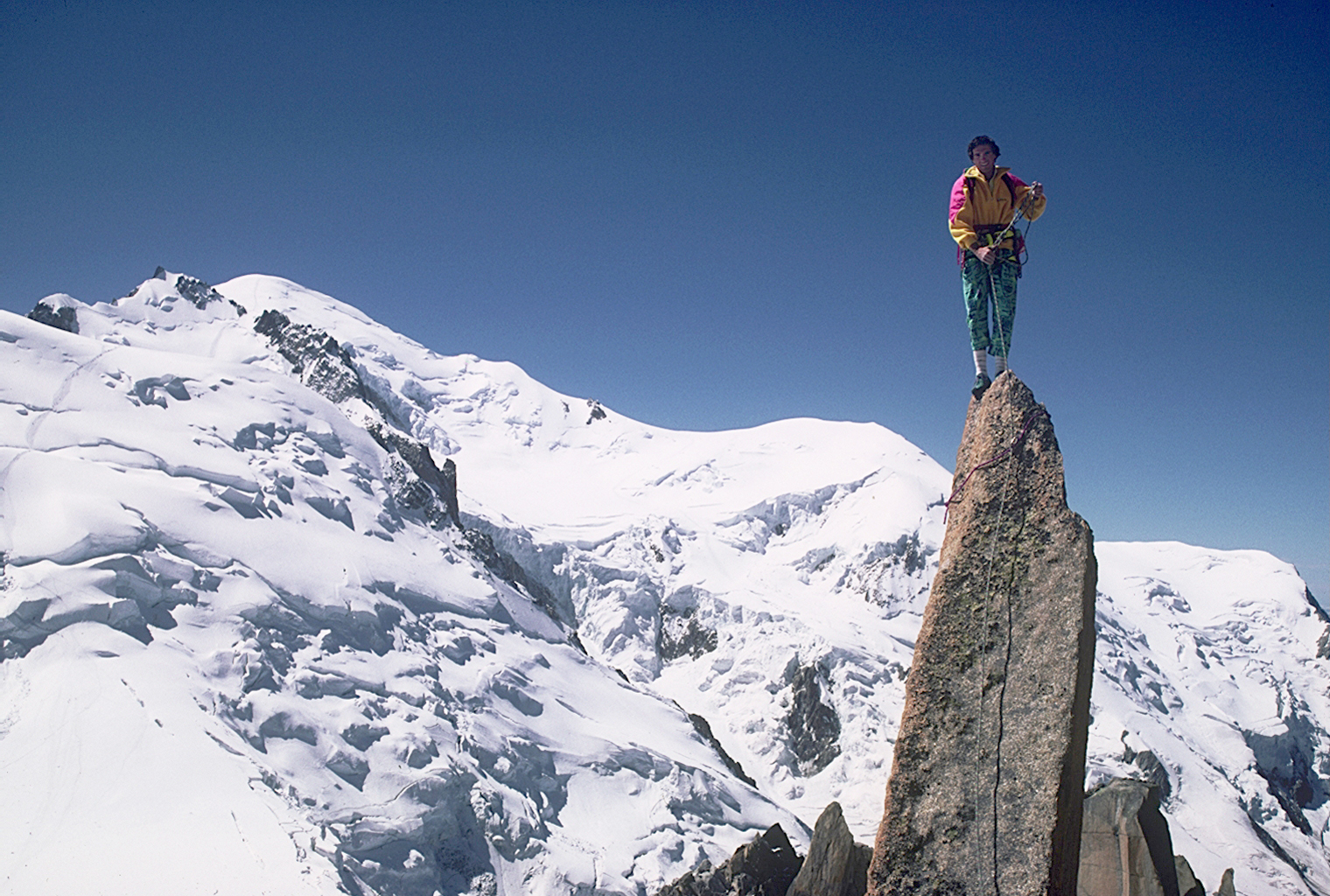
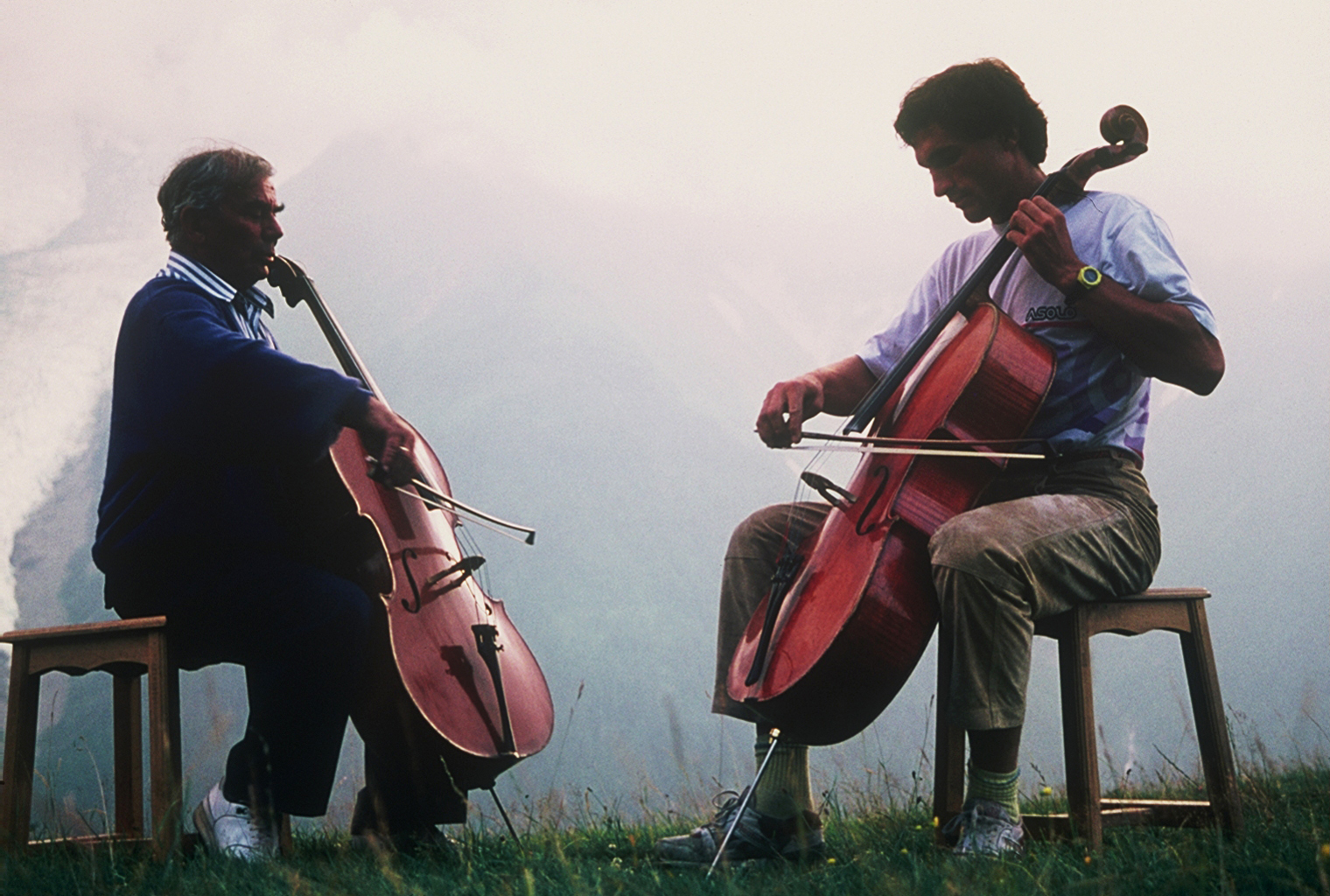
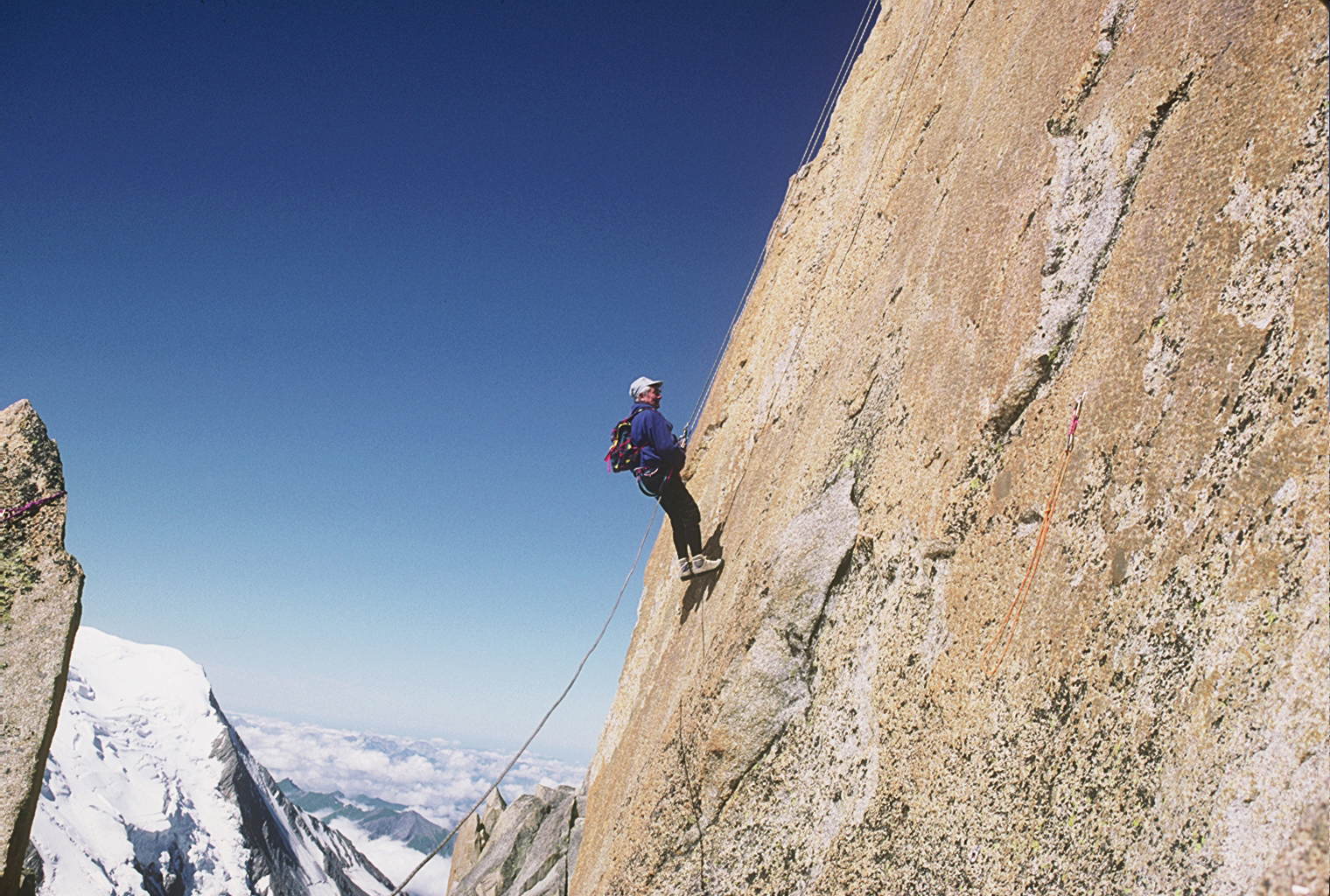
On lira ci-dessous la brève note de présentation du projet adressée à Guy Maxence, responsable de l’émission hebdomadaire « Les Carnets de l’Aventure » (Antenne 2), printemps 1988.
” Un journaliste du New York Times m’attend dans ma loge. Papier et stylo en main, il commence :
– « D’où êtes-vous ?
– Du Beaujolais. Je suis caladois ».
Les caladois sont les habitants de Villefranche-sur-Saône. Il ne le savait pas ! L’interrogatoire continue :
« Comment peut-on vous classer ?
– Violoncelliste-skieur.
– Combien gagnez-vous avec ça ?
– Pas grand chose !
– Combien êtes-vous dans votre cas ?
– Tout seul. »
Ayant écrit ces derniers mots, il sort lentement de ma loge, comme écrasé sous le poids d’une immense fatigue.
Maurice Baquet, in On dirait du veau, Editions JML
Sait-on que le violoncelliste et acteur Maurice Baquet fut aussi un montagnard de renom ? Que dans les années Trente, entre deux représentations théâtrales du Groupe Octobre, qu’il animait avec les frères Prévert, Marcel Duhamel, Jean-Louis Barrault, Raymond Bussières et quelques autres, il se précipitait dans les Alpes pour disputer, sous les couleurs françaises, des compétitions internationales de ski ?
Sait-on que cet homme qui joua du violoncelle sur toutes les scènes du monde, qui s’illustra dans l’opérette, au music-hall et incarna plus de cent vingt rôles à l’écran, des Bas-fonds de Jean Renoir à Bibi Fricotin, fut aussi le compagnon de cordée du grand alpiniste marseillais Gaston Rebuffat ?
Juillet 1956 : Gaston en tête, la cordée Rebuffat-Baquet réalise une « première » parmi les plus convoitées de l’époque, celle de la face sud de l’Aiguille du Midi (3842 mètres), magnifique paroi de granit rouge se dressant comme un rempart au-dessus de la Vallée Blanche, dans le Massif du Mont-Blanc.
Août 1988 : comme pour saluer la mémoire de son ami Gaston aujourd’hui disparu, Maurice Baquet gravira à nouveau cette paroi suspendue entre terre et ciel derrière celui qui, de 50 ans son cadet, est considéré comme l’un des meilleurs alpinistes contemporains : Christophe Profit.
Ce « come-back » en paroi, trente-deux ans plus tard, constituera l’action du film…
Parce qu’elle a suscité tous les rêves, tous les défis technologiques ou sportifs, parce que le Mont-Blanc est son tuteur, parce qu’un téléphérique – le plus haut du monde ! – met son sommet à la porté d’un demi-million de touristes chaque année, l’Aiguille du Midi est l’une des montagnes les plus célèbres de la planète.
Quant à cette voie d’escalade qu’ouvrirent dans sa face sud Rebuffat et Baquet, elle est devenue aujourd’hui l’une des grandes classiques du Massif du Mont-Blanc. Itinéraire difficile, soutenu, très athlétique, « La Rebuffat » comme l’ont baptisée les alpinistes attire chaque été des centaines de cordées… au point qu’il faut parfois faire la queue avant de pouvoir s’y lancer !
Bien entendu entre temps les pratiques, les mentalités ont considérablement changé. On ne grimpe plus guère aujourd’hui pour « vaincre » un sommet. Ce qui compte désormais c’est la préoccupation esthétique, la sensation pour elle-même…
Juillet 1956 : Rebuffat et Baquet sont en pleine ascension quand brusquement le temps se gâte. Et c’est sous une tempête de neige qu’ils parviennent au sommet. Les deux hommes se réfugient dans la benne du téléphérique et regagnent discrètement Chamonix. Dès leur arrivée, une fanfare, des feux de Bengale… Gaston et Maurice n’en croient pas leurs yeux. Quel triomphe ! Ils avancent parmi la foule au pas cadencé… lorsque tout s’éclaire : n’est-on pas le 14 juillet ?
Août 1988 : voici donc Baquet de retour dans cette face vertigineuse, précédé de son nouveau complice, Christophe, auteur de grands exploits solitaires, dont la fameuse « trilogie » hivernale Grandes Jorasses-Eiger-Cervin…
La voie se gravit désormais en « libre », c’est-à-dire en utilisant uniquement les aspérités du rocher et non en s’aidant de pitons, d’étriers et autres moyens artificiels comme ce fut si longtemps le cas.
Bien sûr Maurice n’en mène pas large, et pour cause : la paroi est insurmontable !
Mais quoi ? Douterait-on que son humour puisse triompher des pires obstacles ? Et que le cinéma produise des miracles ?
Nicolas Philibert
“July 1956: Gaston Rebuffat and Maurice Baquet made the first ascent of the south face of the Aiguille du Midi, a red granite wall at an altitude of 3,842 metres in the Mont-Blanc range. August 1988: to pay tribute to his late friend’s memory, Maurice Baquet returns to the mountains and, in spite of his age, climbs the same face again behind one of the world’s greatest mountaineers, Christophe Profit, fifty years his junior. An exploit followed by the camera of Nicolas Philibert who, beyond the adventure itself, sketches out a remarkable portrait of the actor and cellist who is still as passionate about the mountains. Very few words, but gestures and looks that say a great deal about the multiple talents of this former skier on the French national team who, in the thirties, was the driving force behind the Octobre group with Jacques Prévert and a few others. A genuine rediscovery of this exceptionally gifted man and an excellent example of intelligent television.”
Bernard Heitz, Télérama – January 28, 1989
……………
“…In the fields of the cello or acting, Maurice Baquet requires no introduction. Where the mountains are concerned, the director Nicolas Philibert tells us an old story – one of love – in 23 minutes and 46 seconds. It isn’t always easy to understand how Philibert manages to film the climb but each image, each shot reveals the exploit in a blend of tenderness and precision, backlighting and close-ups. And Baquet of course carries a rather unusual burden: his cello…”
M.S., Libération – January 28, 1989
……………
“In the thirties, between two performances of the Octobre group, Maurice Baquet would set off to join Gaston Rebuffat who, like Tabarly for the yachting world, represents one of the key figures of mountaineering in France. Baquet, as he still does now, would arrive in Chamonix with his cello, the loyal companion of all his journeys to which he devotes several hours each day. In this film, we see him offer the Alpine landscape a few notes of Bach and give a lesson to Christophe Profit, more at home on a rock face than with a bow in his hand. These images, painstakingly filmed, draw their quality from their even-handedness. And this documentary, that isn’t designed to promote anything apart from a little poetry, deserves to be hailed as a success.”
Benoît Charpentier, Le Figaro – January 28, 1989
